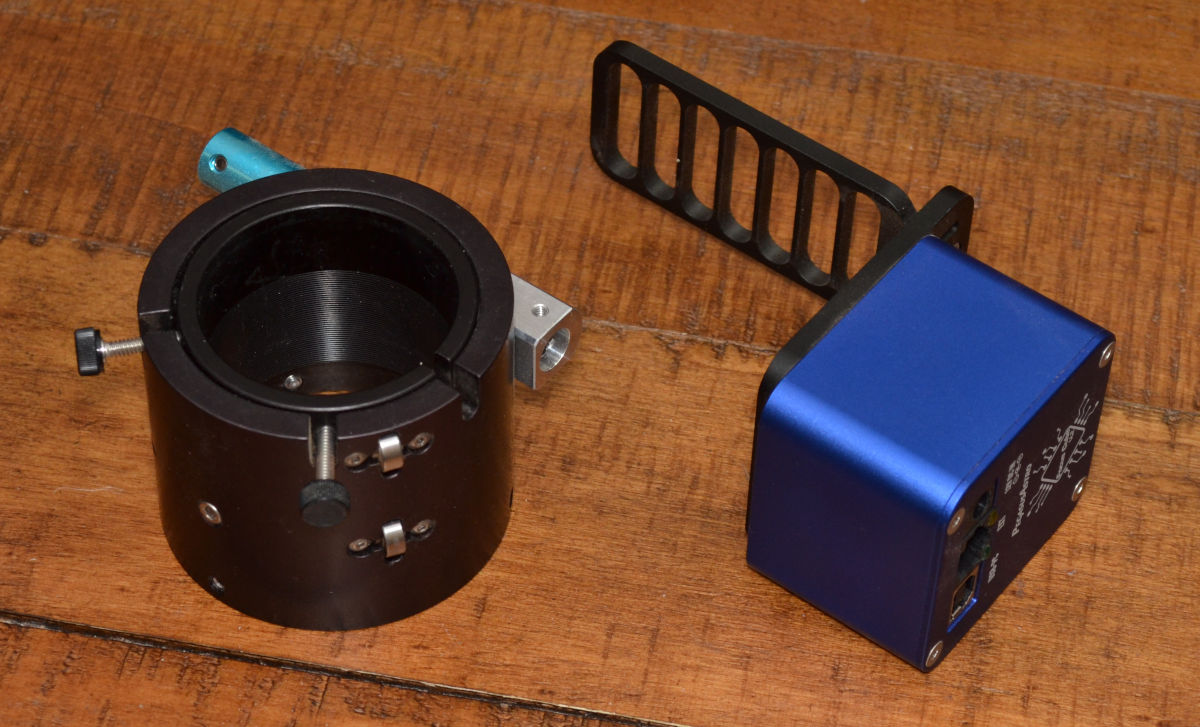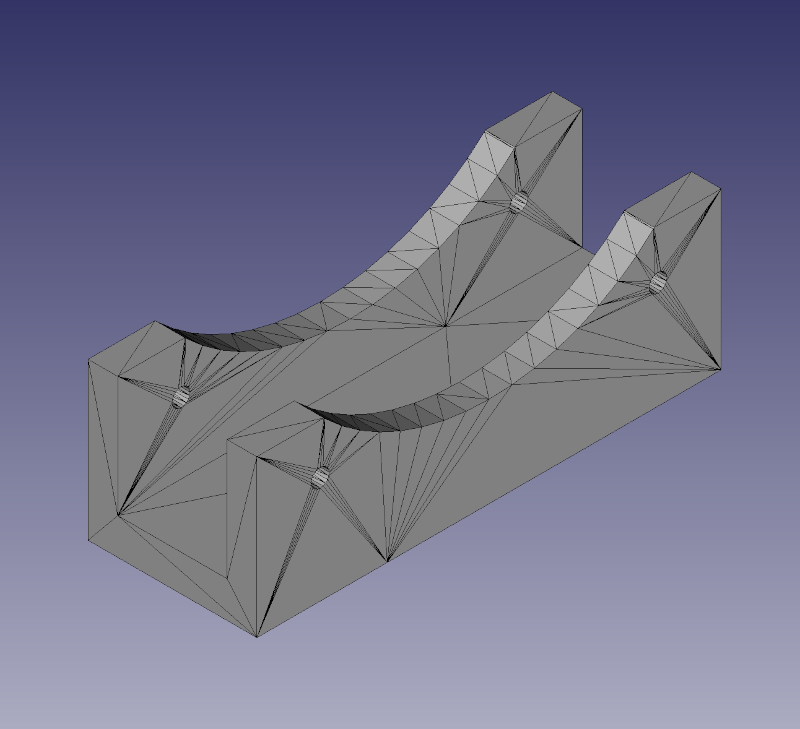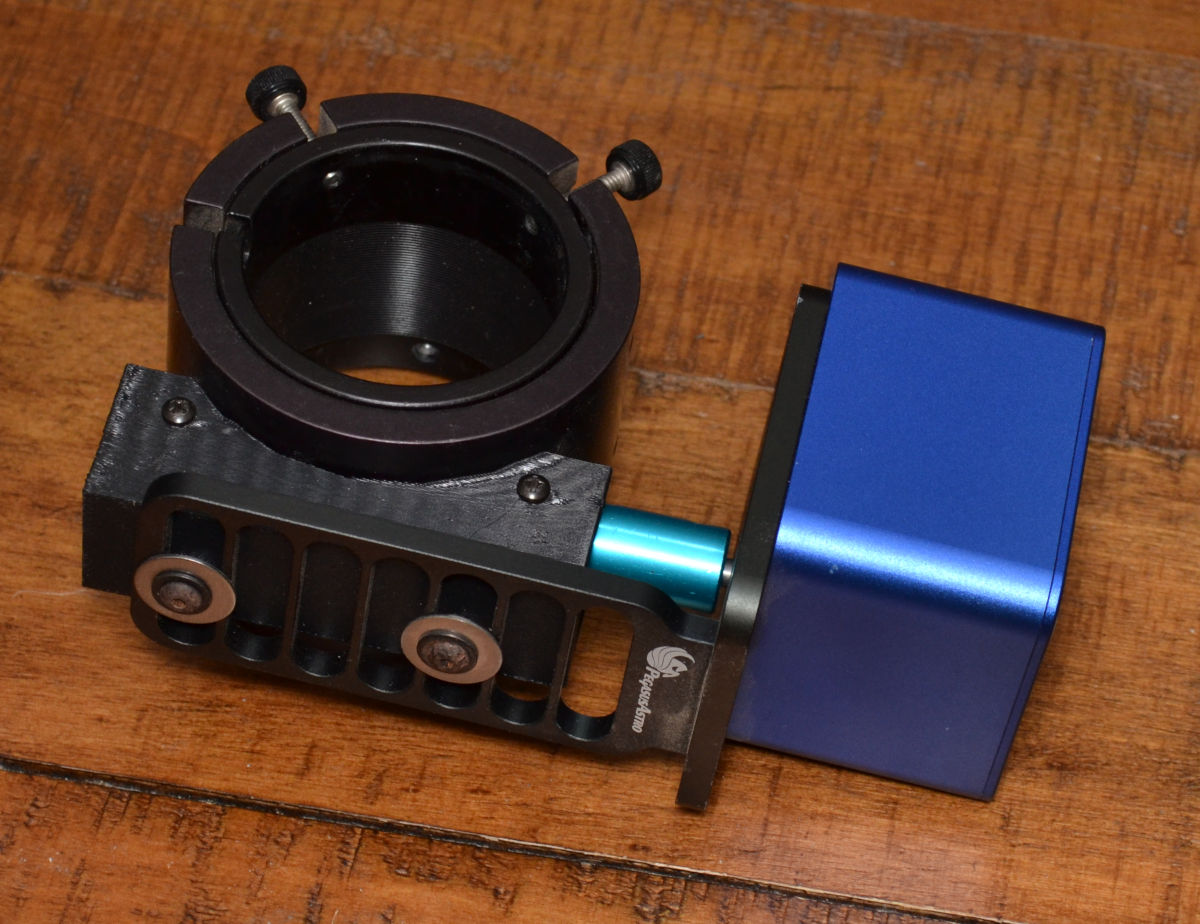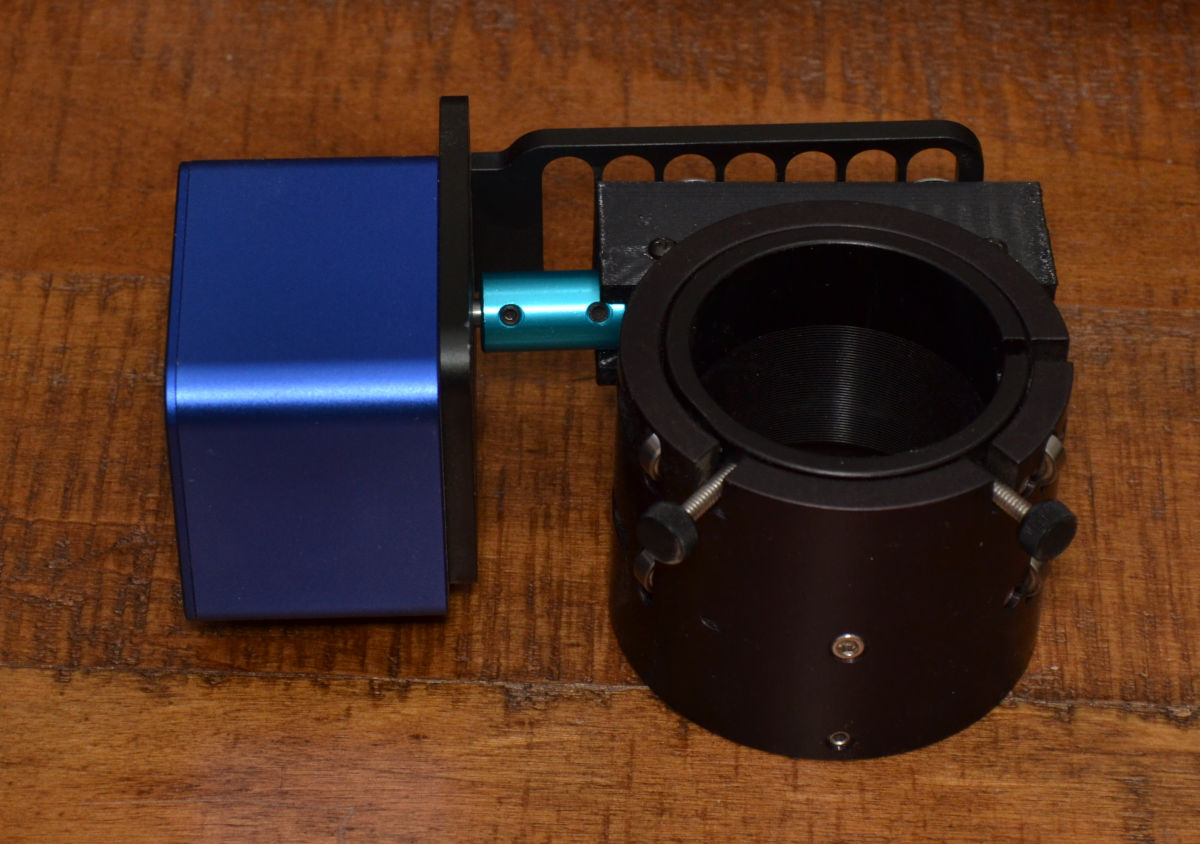Putting a Pegasus FocusCube2 on a Meade 1209 Focuser

The Meade 1209 is a Crayford focuser which comes with a DC motor to allow focusing by hand controller or API (on the scope where it is installed). It is a mechanically good product, but the lack of positional feedback makes it useless for serious automation. I have removed the plastic housing, motor and gears from the focuser. Only the body and roller are used.
The FocusCube 2, unlike other Pegasus Astro focus motors, has the controller built in, so only a 12V power supply and a USB cable are needed. Both connections were donated by my old focus controller. There is a temperature probe included, with a 24" cable. I'm going to use the probe to see how well it works for temperature compensation. Indi's FocusCube 2 driver does not inherently support temperature compensation, but there is a way using Ekos to refocus each time the temperature changes by n°.
I designed a 3D printed bracket to go around the roller housing, for the Pegasus FC2 mounting bracket to fasten to. Everything is round back there - no flat surfaces, except on the front and back of the roller housing, where there are four #4-40 tapped holes. The 3D parts were made by PCBWay.com. They cost $19.91 for 2 pieces, plus shipping. I requested 80% fill. It was the first time I ever ordered 3D printed parts, and so the first time I used PCBWay to source them. I also had one made at another shop, which came made with a really brittle feeling, ivory colored plastic. I have seen other printed parts, and did not have high expectations. The PCBWay part was really nice looking, and far and away the best, so that is what I used. The other also had some overhang on the edges of the curved sections, which meant some work would be required to get it to fit correctly. I got quotes from several other places. One wanted $70 for one part, while others had $100 minimum orders. PCBWay is a company I've done business with before, and I trusted them. They didn't let me down. They never do.
The STL file is available for download. You will want to drill the holes a little larger. It is my first part, and I didn't have a clue what I was doing. The bracket fits a 2017 era 1209. I doubt Meade has changed the focuser significantly since then.
The FC2 came with a set of rigid motor shaft couplers. 5mm to 5mm is the closest size. The focuser shaft is actually 3/16" (4.76mm), and the Pegasus shaft is 5mm. The couplers turned out to be 13.8mm in diameter. The roller housing is 15.2mm wide. The net result is the coupler fit with clearance between the sides of the 3D printed bracket.
I drilled and tapped the holes for the FC2 bracket to fasten to the plastic bracket. Tapping isn't strictly necessary, if you drill the hole the right size, but not being familiar with 3D printed parts, I was concerned with splitting. I used #6-32 screws with fender washers.
Specifications
- The total range, stopping just shy of the hard stops, is 0 to 4950 steps.
- The total for one revolution of the roller is 5755 steps.
- The total travel distance is 11.4mm.
- The resolution is 2.3μm per step.
- Time from 0 to 4950 steps is 25 seconds.
- The motor sticks up above the top of the focuser 6.9mm at 0 steps.
- The range of the focuser is 86% of a revolution, or 309.64°
#3 is arrived at by subtracting the 0 position (+1mm) from the full out 4950 position (+12.4mm).
#6 is the approximate amount the motor interferes with the filter wheel. I added two 2" parfocalizing rings to the front of the filter wheel to prevent
a collision between the filter wheel body and the focus motor.
The Indi Pegasus FocusCube driver supports different speeds via the maximum speed. The actual average step rate is 190 steps per second, on a long slew, when set for 400. It is probably 200 before the acceleration and deceleration. It can be changed to a value higher than the 400 stated maximum, but skips at values over 600. That is with no load on the focuser. Setting the maximum to values lower than 400 causes the motor to vibrate more and make a little more noise. At 400, it is nearly silent, but under load, it makes a little more noise.
Does It Work?
I ran it many times, getting the focus as good as I could manually, then autofocusing. Each time, the autofocusing was as good as the manual focus, and the manual focus was better than manual on the old geared stepper. There is very little, if any, backlash in the FocusCube 2. The autofocus app always found best focus in two or three passes, and I couldn't improve it manually. That is exactly what I had hoped for. I was using a step size of 25 for both manual and autofocusing. Reducing the step size might improve focus a tiny bit for manual focusing. The autofocusing code will calculate down to a single step when it determines the best focus, so it doesn't need smaller steps. The total cost of the project:
| Item | Cost |
|---|---|
| Meade 1209 | $239.00 |
| Pegasus FocusCube 2 | $253.00 |
| Plastic parts | $42.00 |
| TOTAL | $534.00 |
That's not cheap, but it is a really nice setup. I don't know that I would do this as opposed to buying a new focuser, but if you already have a 1209, this is a good way to make it useful. A Moonlite focuser motor control is nearly as much as this complete focuser. I'll leave it to Moonlite owners to say if it is a fair comparison. There are probably other factors to consider, besides just cost. Speaking of cost, the price of the Pegasus FocusCube 2 has gone up to $310, as of the time of this writing.


